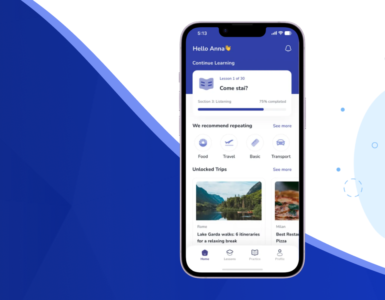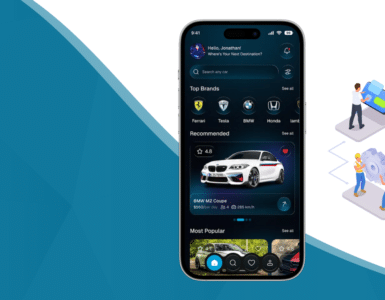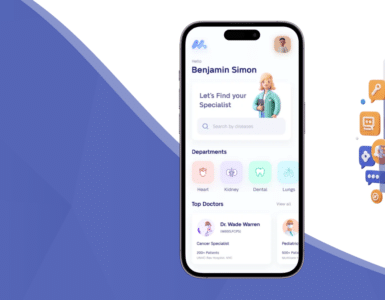Over the last few years, dating apps have completely redefined how people meet and connect. From being a novelty in the early 2010s to becoming a part of everyday life by 2025, dating apps have evolved into powerful platforms powered by AI, analytics, and human psychology. With the increasing digitization of relationships—especially post-pandemic—online dating is no longer just a backup plan; it’s often the first step.
At Siddhi Infosoft, we’ve worked with numerous startups and businesses in launching smart, scalable, and secure dating apps. Whether you’re launching a niche dating app for a specific audience or aiming to compete with giants like Tinder or Bumble, your product must align with current user behavior, expectations, and tech trends.
In this blog, we’ll walk you through the must-have features, user expectations, and new technology integrations that will help your dating app thrive in 2025 and beyond.
Why the Demand for Dating Apps Continues to Surge
Social dynamics have shifted. People are now more open to meeting others online—not just for casual conversations, but for serious relationships, friendships, and even virtual dates. The need for meaningful connections in a digital-first world has fueled a massive rise in dating app downloads.
In fact, according to Statista, the online dating segment is expected to cross $4.2 billion in revenue by the end of 2025. As of this year, over 400 million people globally use at least one dating app.
This tells us two things:
- There is a growing opportunity for new entrants.
- User expectations have become more refined, and competition is intense.
To create an app that users not only download but continue to use, let’s dive into the core features and considerations.
What Today’s Users Expect from a Dating App
- Top-Notch Security and Privacy
With cyber threats increasing, users are more cautious than ever. Your dating app must prioritize data encryption, secure authentication methods, and real-time content moderation.
Users expect:
- End-to-end encrypted chats
- Secure logins with two-factor authentication or biometric login
- Control over who can view their profile and how much data is visible
- Ability to report/block users quickly and easily
Tip: Let users decide how visible they want to be. Features like incognito mode, blurred profile preview, or time-based visibility help create a safer experience.
- A Clean and User-Friendly Interface
The UI/UX of your dating app defines the first impression. If your app is clunky, slow, or confusing to navigate, users will uninstall it before even exploring its features.
UI/UX trends in 2025 include:
- Swipe alternatives like video-based scrolling or card-style matching
- Dark mode and customizable themes
- Voice-based navigation
- Gender-neutral design elements
Keep the interface elegant, intuitive, and clutter-free. Minimalist design with emotional cues (animations, emojis, reactions) can significantly boost user engagement.

- Personalization Through AI
Users are tired of generic suggestions. They expect dating apps to understand their preferences over time. This is where AI and machine learning play a crucial role.
Modern dating apps are now using:
- Behavior tracking (what profiles users linger on)
- Compatibility scoring
- Interest and hobby matching
- Conversation tone analysis (to suggest matches with similar communication styles)
Some platforms even offer AI-powered dating coaches to suggest improvements to bios, opening lines, or profile pictures.
Features That Define a Successful Dating App
- Location-Based Matching
While location-based features have been around for a while, in 2025 they are far more refined.
You can now:
- Match users who frequent the same locations
- Suggest nearby date spots
- Recommend users who attended the same event or concert
- Offer “people you crossed paths with” type features (used by apps like Happn)
Add options for users to toggle between local matches and global discovery, catering to both short-term and long-distance interests.
- Flexible Sign-Up and Access Control
Allowing users to register via social platforms like Facebook, Google, or Apple ID is convenient—but transparency is key.
Let users know:
- What data you’re accessing
- That you won’t post anything to their social timelines
- How their personal information is used
Pro Tip: Give users the option to sign up using email or mobile number for more privacy-conscious audiences.
- Smart Matching Algorithms
Gone are the days of relying solely on swipes or random profile browsing. Today’s apps are using behavioral science + user input to suggest meaningful matches.
Examples include:
- Questionnaires about personality, habits, values
- Gamified compatibility quizzes
- In-app actions like “likes” and “interests” that influence suggestions
- Match quality indicators
Advanced algorithms learn over time and adapt. The more the user interacts, the better the app gets at suggesting the right people.
- Robust Messaging Options
Messaging isn’t just about chatting anymore—it’s about sparking real conversations.
Key messaging features for 2025:
- Icebreaker questions
- Video intros and voice notes
- GIFs, stickers, and emoji reactions
- Conversation prompts
- “Reply timers” to encourage faster engagement
- Options for video/voice calls within the app
You can also gamify messaging: unlock chat features after a mutual like, reward active users, or assign compatibility-based conversation starters.
- Control Over Who Messages First
One trend that continues to thrive is giving one party control over who initiates the conversation (as pioneered by Bumble).
You can:
- Let users set preferences (e.g., only women message first, or roles like “initiator” and “responder”)
- Use match rules to balance the conversation experience
- Offer anonymous Q&A features before revealing identities
This encourages better conversation flow and helps reduce ghosting.
New-Age Trends Shaping Dating App Development
Virtual Dating Experiences
With advancements in AR and VR, some dating apps are offering virtual date environments—from 3D cafes to interactive games, allowing users to “go on a date” before meeting IRL.
AI Match Advisors
AI assistants are guiding users in choosing photos, rewriting bios, and even giving etiquette advice. They function like your personal dating coach.
Niche Dating for Micro-Communities
Rather than going broad, many startups are succeeding by going deep. Apps focused on specific demographics (e.g., pet lovers, book readers, LGBTQ+ communities, single parents) are gaining loyal user bases.
Building community-first features like forums, events, or blogs can make your app feel like a lifestyle platform—not just a swiping tool.
Final Thoughts: Partner with the Right App Development Team
Dating app development isn’t just about creating a platform—it’s about building trust, connection, and emotion through design and technology.
At Siddhi Infosoft, we specialize in crafting custom dating apps tailored to your unique vision. From ideation to UI/UX design, backend infrastructure to post-launch support—we’ve helped numerous businesses bring innovative dating apps to market.
























